TIME TO MOMO: MARSEILLE
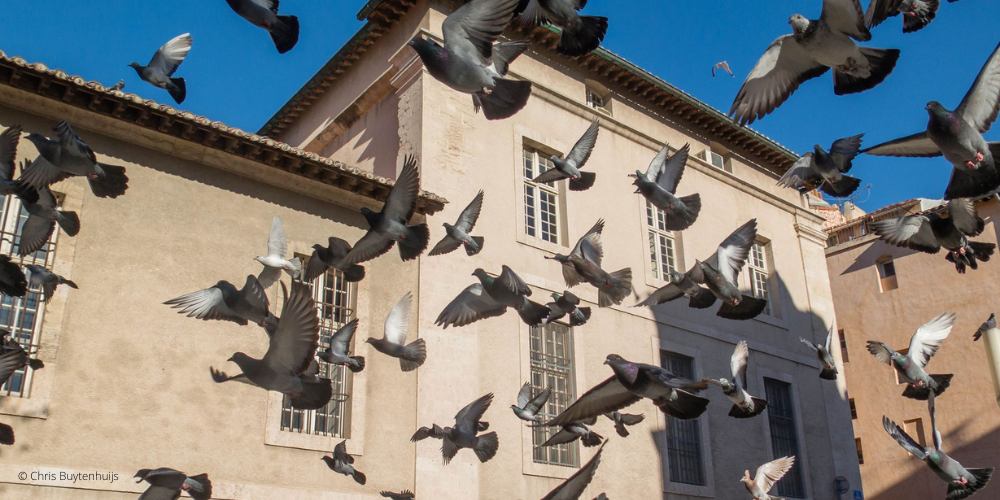
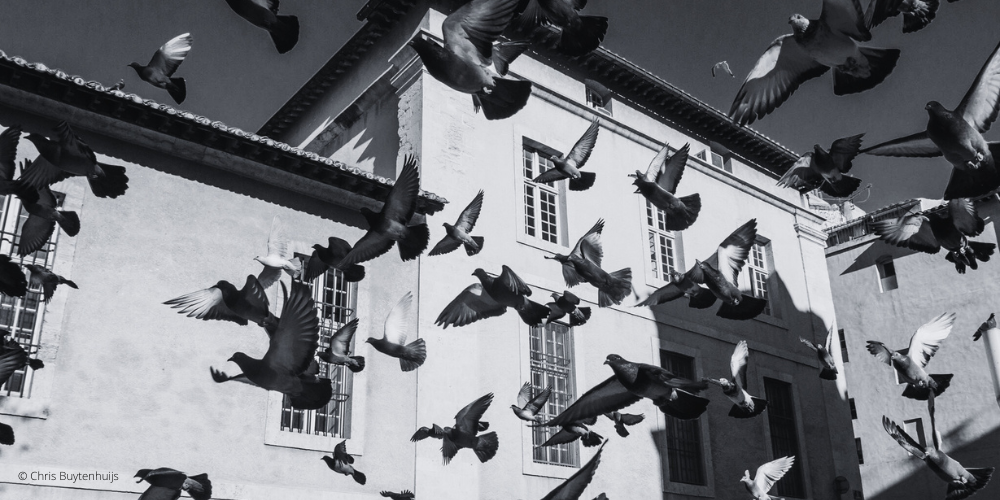
Ver van het massatoerisme en Franse clichés ligt de zonnige havenstad Marseille, een prachtige plek met een rijke geschiedenis en strakblauwe luchten. De stad, gesticht door de Grieken, is de oudste van Frankrijk. Je kunt hier dus heerlijk struinen door de historische straatjes. Maar Marseille is ook een stad met een rauw randje, een rebellerende stad die zich afzet tegen de bourgeoisie en de chique hoofdstad Parijs. De kunstzinnige Cours Julien met zijn vele streetart is daarvan een mooi voorbeeld, maar ook bij culture broedplaats La Friche la Belle de Mai, waar je heerlijk kunt feesten op het dakterras, hangt de eigenzinnigheid in de lucht. Je reis naar Marseille komt op een hoogtepunt bij een bezoekje aan een van de mooiste nationale parken van Europa, Les Calanques, met zijn hoge kliffen en zijn azuurblauwe water.
Voor de Rotterdamse uitgever Mo'media schreef ik, met veel plezier, de stadsgids "Time to Momo: Marseille & Aix-en-Provence". De gids over mijn geliefde Zuid-Franse stad ligt vanaf augustus 2023 in de Nederlandse en Vlaamse boekhandels. Klik hier om de gids te kopen of om meer te weten te komen over Time to Momo.
HET BELANG VAN LUCHT
Een beschouwing van de nieuwe ICK-voorstelling We the BREATH
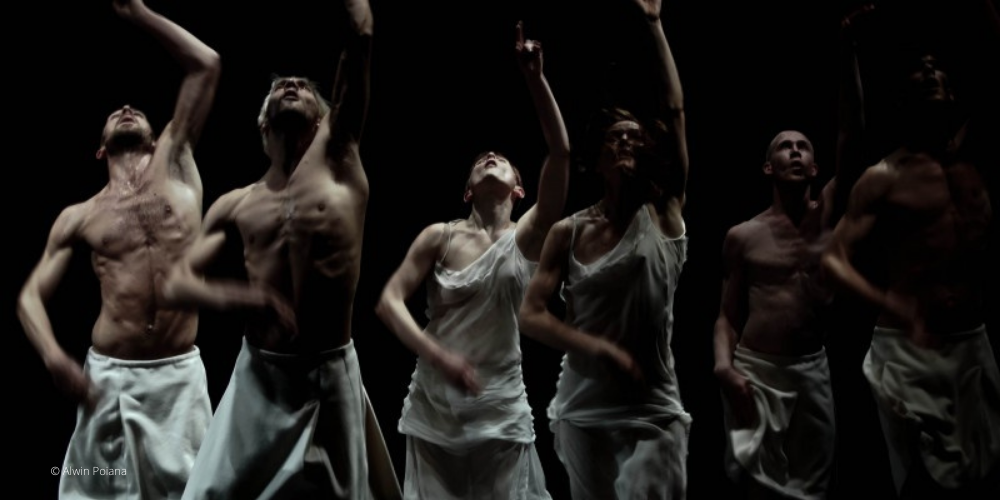
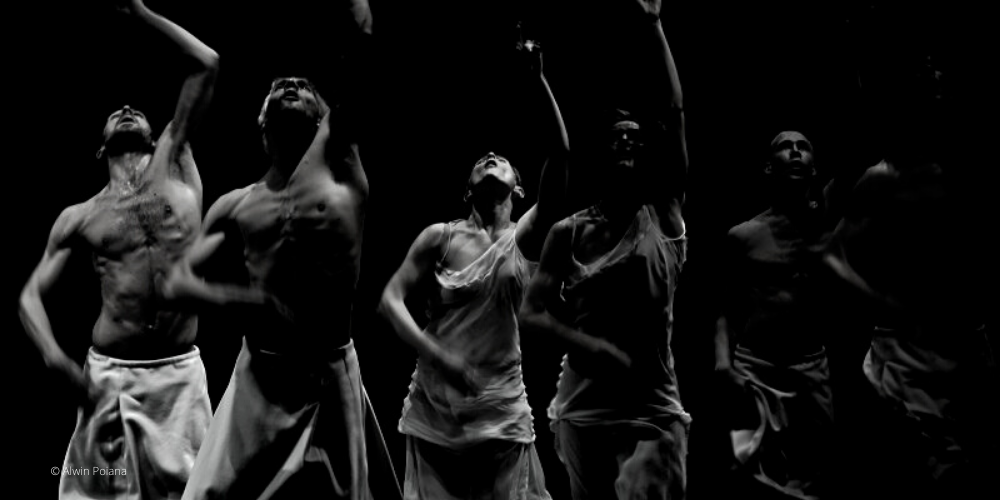
De nieuwe voorstelling We the BREATH van Emio Greco en Pieter C. Scholten stipt een onderwerp aan dat we in ons dagelijkse, drukke leven, veelal vergaten of voor lief namen: ademhaling. Toch is ademhaling van cruciaal belang. Bij de geboorte begint het leven bij de eerste ademteug. We kunnen onze ademhaling daarna niet zomaar pauzeren of haar verbergen, en zijn, in zekere zin, verplicht te ademen.
Het inzicht dat lucht daadwerkelijk van (levens)belang is werd pakweg een jaar geleden duidelijk met de uitbraak van COVID-19, een ziekte die ernstige luchtwegproblemen kan veroorzaken. We werden met de neus op de feiten gedrukt. De zwevende virusdeeltjes en zelfs de damp op onze bril bij het dragen van een mondkapje maakten ons plotseling bewust van onze ademhaling. En hoewel lucht zich niet houdt aan grenzen werd er een poging gedaan haar te controleren en in te passen in de nieuwe anderhalvemetersamenleving. In diezelfde periode, op 25 mei 2020, bracht de dood van George Floyd een storm van protesten teweeg. Met zijn laatste woorden “I can’t breathe” verhief Floyd ademhaling tot een politiek debat. Ademhaling werd, naar aanleiding van dit incident, een symbool voor ongelijke machtsrelaties en toonde het schrijnende verschil tussen wie wel mag ademhalen en wie niet.
Ademhaling is niet alleen een veelzijdig politiek, medisch en filosofisch onderwerp dat door zijn actualiteit een mooi uitgangspunt vormt voor een choreografie, het is tevens vanuit fysiek oogpunt van daadwerkelijk belang in de dans. Ademhaling is zo ook geworteld in de geschiedenis van het dansgezelschap ICK Amsterdam. Al sinds de jaren ’90 presenteren Greco en Scholten hun unieke visie op ademhaling in dans via de filosofie “tussen brein en beweging” (Fra Cervello e Movimento) en de “Double Skin/Double Mind methode”, ook wel DS/DM. Beide visies zijn gebaseerd op het idee omtrent het intuïtieve lichaam. Een dramaturgisch concept dat Greco en Scholten in de jaren ’90 ontwikkelden om de leegte op te vullen naast het al bestaande virtuoze lichaam en conceptuele lichaam in dans. In het artikel “The Intuitive Body” van Suzan Tunca zegt Greco over dit intuïtieve lichaam:
“Naar aanleiding van de voorstellingreeks en filosofie “Fra Cervello e Movimento” (tussen brein en beweging) wilden we een polarisatie creëren tussen instinct en ratio, in het midden vonden wij intuïtie.”
Om de staat van een intuïtief lichaam te bereiken ontwikkelden Greco en Scholten in 1998 de DS/DM-methode. Deze dansmethode staat aan de basis van de vele choreografieën van Greco en Scholten en wordt ook gebruikt als workshop voor dansers en dansdocenten. De methode bestaat uit vier basisprincipes. Breathing is de eerste, gevolgd door: Jumping, Expanding en Reducing. Tijdens Breathing concentreren de dansers zich op hun ademhaling. Bij het inademen streeft de danser naar een extreme verlenging van het lichaam. Bij het uitademen ontspant de danser zich, beweegt richting de grond, en zoekt hierbij naar de makkelijkste en comfortabelste weg naar beneden. Op het moment dat alle lucht het lichaam verlaten heeft, valt de danser op de grond of begint meteen weer in te ademen, strevend naar nieuwe mogelijkheden om het lichaam te verlengen.
Maar waarom begint de DS/DM eigenlijk met het element Breathing? Het antwoord vinden we terug in een citaat van Greco in de DS/DM-documentaire (2007), geregisseerd door Maite Bermúdez:
“Ademhaling is de verbinding tussen binnen en buiten, het doorbreken van innerlijke grenzen, daar overheen gaan, dan weer teruggaan, terug in jezelf, de buitenwereld in jezelf opnemen.”
De connectie die Greco beschrijft tussen binnen en buiten is sterk gerelateerd aan het dualisme van lichaam en geest en aan hun eigen ontwikkelde theorie “tussen brein en beweging”. Door de focus op ademhaling leren de dansers een verbinding te leggen tussen de elementen: binnen en buiten, lichaam en geest, en ratio en instinct, waardoor het intuïtieve lichaam ontwikkeld kan worden.
Het creëren van een intuïtief bewustzijn omtrent het eigen lichaam, en hoe deze laatste zich verhoudt tot de ruimte, is cruciaal voor de elementen die volgen in de workshop. In Expanding helpt ademhaling om meer lengte in bewegingen te creëren, en in Jumping worden de dansers uitgedaagd om een verbinding te zoeken tussen het ritme van hun ademhaling en het ritme van hun sprongen. Breathing kun je daarom beschouwen als een basiselement waarop teruggevallen kan worden, zo stelt Scholten in een interview uit 2017 in het kader van mijn onderzoek Don’t Forget to Breathe.
Adem vormt niet alleen een verbinding tussen het lichaam en de ruimte, maar ook tussen de lichamen in de ruimte. Dit is van belang in de choreografieën van Greco en Scholten waarin de dansers hun ademhaling gebruiken om hun bewegingen op elkaar af te stemmen. Een veelgebruikte techniek hierin is het tellen van muziek. In de choreografieën van Greco en Scholten tellen de dansers niet. Door bewust samen te ademen proberen ze een gezamenlijke energie te creëren. Het ritme van de adem vervangt het tellen van de muziek en de verbinding door de lucht stelt de dansers in staat te dansen alsof ze één lichaam zijn.
Dit eenheidsbewustzijn wordt niet alleen gecreëerd tussen de dansers zelf maar ook tussen de dansers en het publiek. Doordat er in dans niet wordt gesproken, wordt ademhaling het belangrijkste element dat het publiek en de dansers verbindt. En dit is meer dan alleen een fysieke uitwisseling van lucht, het gaat hierbij ook om een diepere lichamelijke connectie tussen toeschouwer en performer die het gesproken woord overstijgt.
In de nieuwe ICK-voorstelling We the BREATH komen deze twee concepten: collectiviteit (we) en ademhaling (the breath) samen. Na een lange periode van onzekerheid in de theaterwereld als gevolg van de coronapandemie, tracht deze voorstelling een nieuwe plek te creëren waarin dansers en publiek eindelijk weer samen (op adem) kunnen komen. Hier, wordt lucht niet meer gevreesd. De draad wordt weer opgepakt na een onstuimige periode waarin COVID-19 en de dood van George Floyd, tweedeling creëerde en samenlevingen lieten wankelen. De voorstellingstekst van We the BREATH haakt hierop in, zo stelt zij: “Tijdens de ademhaling kunnen we bij elkaar blijven en onze verschillen herkennen”. En zo is het precies. De actualiteit liet zien dat ademhaling fysieke, psychologische en sociale verschillen bloot kan leggen. Toch biedt dit statement ook hoop. Hoop, dat we, via ademhaling, en ondanks onze verschillen, bij elkaar blijven.
Dit artikel is in september 2021 gepubliceerd in het ICK Space for Dance Art Magazine.
BRAHMS AUJOURD'HUI
Un interview avec la compositrice Graciane Finzi
à propos de sa pièce Winternacht (2018)
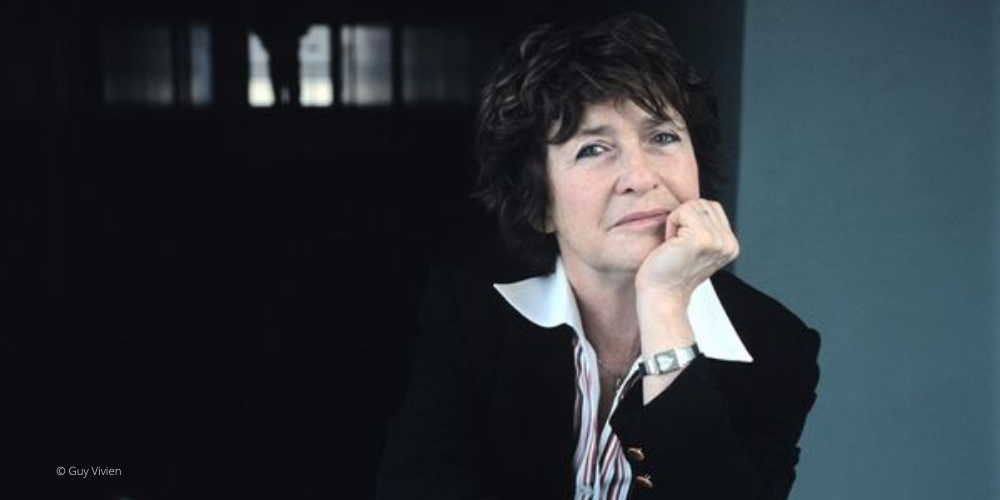
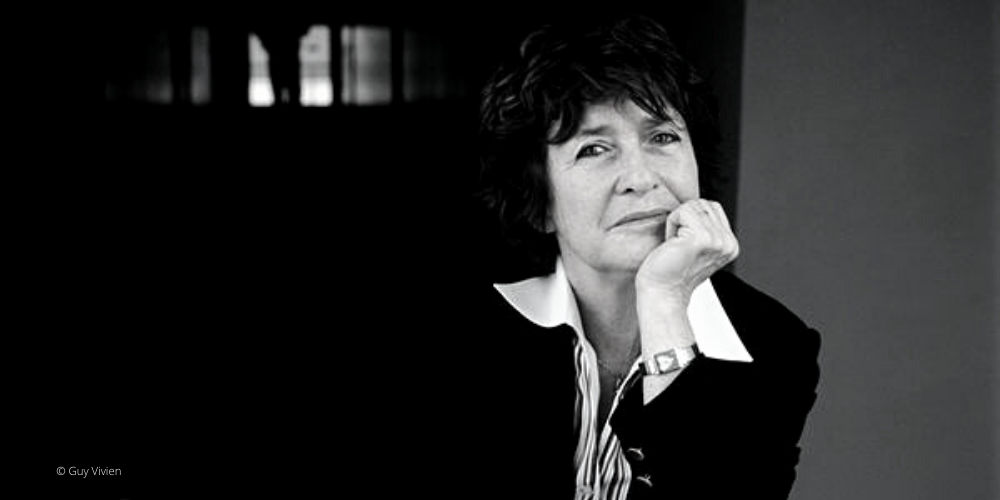
Le 10 Février 2021,
En 2018, Agnès Pyka, directrice artistique de l’Ensemble Des Équilibres à Marseille fait commande à trois auteurs contemporains, Nicolas Bacri, Graciane Finzi et Philippe Hersant, trois œuvres en écho aux Sonates pour violon et piano de Brahms (1833-1897). C’est dans ce contexte que Graciane Finzi compose Winternacht pour violon et piano, un œuvre qui s’inspire de la Sonate pour violon et piano en ré mineur op.100 de Brahms.
Pourquoi avez-vous décidé de rejoindre cette collaboration afin de créer un disque autour de Brahms ?
Cette idée m’a tout à la fois passionnée et en même temps une certaine peur m'a envahie. Écrire en miroir d’une des trois sonates de Brahms était à la fois excitant et terrorisant. Écrire sa propre musique autour de ces œuvres qui sont de véritables chefs d’œuvre est intimidant. Mais le bonheur de participer à cette aventure l'a emporté.
De quelle sonate de Brahms vous êtes-vous inspirées et pourquoi celle-là ?
Je me suis inspirée de la 3ème sonate, peut-être pour l’avoir déjà jouée, peut-être à cause du 2ème mouvement qui m'émeut tellement et sûrement parce que j'y ai vu très vite les éléments, les petites cellules dont j'allais me servir, les décaler, les agrandir, les détourner de leur fonction initiale, tout en gardant une grande humilité à leur égard en les rendant imperceptibles. Mais elles sont là, elles existent, elles m'ont nourrie. Winternacht, est également en 4 mouvements, comme la 3ème sonate de Johannes Brahms.
Pouvez-vous nous parler de l'expérience des résidences et de l'enregistrement du disque en présence des deux autres compositeurs et des musiciens ?
Une grande amitié, des connivences musicales, tout contribuait à ce que nous soyons heureux tous les trois de vivre cette même aventure avec Agnès Pyka (directrice artistique de l’ensemble Des Équilibres et premier violon) et Laurent Wagschal (piano). Nous écouter les uns les autres, participer ensemble à ces moments de musique qui nous appartenaient, se permettre de se conseiller mutuellement ont contribué à tisser des liens assez magiques que nous n'oublierons jamais.
La compositrice Graciane Finzi a écrit plus d’une centaine d’œuvres instrumentales ou vocales tirées du répertoire soliste, chambriste ou symphonique, avec sept opéras au catalogue et un goût prononcé pour le théâtre musical. Ses compositions sont créées par de grands interprètes et elle est également jouée par des orchestres fameux, français ou étrangers. De 1979 jusqu’à son départ en retraite l'année 2013, elle enseignait la formation musicale et la lecture à vue pour les chanteurs Au Conservatoire National Supérieur de Musique de Paris. Enfin, en 2020, elle est nommée chevalière des Arts et des Lettres.
Le disque Brahms Aujourd'hui est apparu sous le label Klarthe. Savoir plus sur mon travail sur la communication pour l'ensemble Des Équilibres à Marseille.
HET LAND VAN NOOIT
Een avontuurlijke busreis naar een beloofd pretpark
Over de aantrekkingskracht van populisme
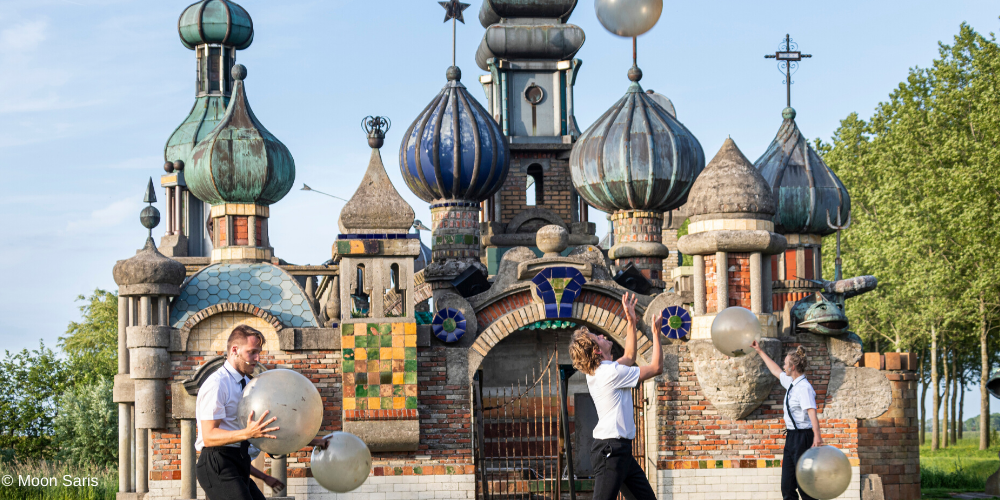
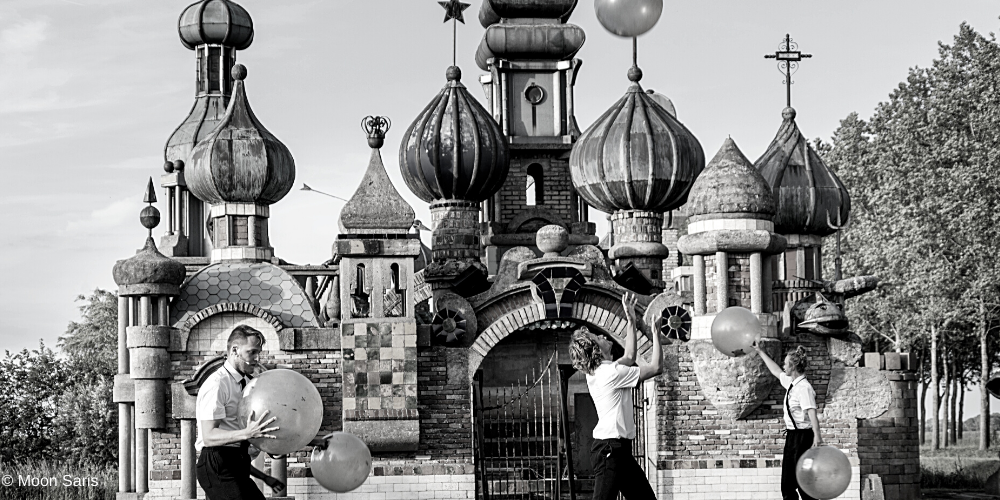
Vanaf het begin der tijden wordt de aarde bezocht door buitenaardse wezens en het zou zo maar kunnen dat ze binnenkort terugkomen. Waarschijnlijk landen ze in een voetbalstadion, of verschijnen op tv. Wellicht dat zij ons zouden kunnen helpen bij de grote uitdagingen van onze tijd… Hebben de graancirkels je niet weten te overtuigen? Ga dan mee op deze unieke expeditie!
In deze nieuwe multidisciplinaire voorstelling vol zang, muziek, geluidskunst en performances neemt theatermaker Anne Roos Rosa de Carvalho je mee op een avontuurlijke busreis. Eindbestemming? Kunsttuin Nederlands Kremlin, een fantasierijke beeldentuin in de Noord-Hollandse polder. Hier word je ondergedompeld in het gedachtegoed van zelfverklaard wetenschapper en schrijver over buitenaards leven, Erich von Däniken.
Waarom vinden grote groepen mensen Von Dänikens’ theorieën zo boeiend? En waarom willen we zo graag in dit soort charismatische persoonlijkheden geloven? In ‘Het Land van Nooit’ plaatst De Carvalho deze vragen in een breder perspectief door zich te verdiepen in de aantrekkingskracht van populisme. Het verstarde debat omtrent dit ingewikkelde onderwerp wordt op lichte wijze onder de loep genomen in een voorstelling waarin wetenschap, fictie en politiek op losse schroeven komen te staan.
Deze communicatietekst schreef ik in de lente 2019 voor het gezelschap van Anne Roos Rosa de Carvalho. Met de voorstelling "Het Land van Nooit" speelden we twee weken lang op de bijzondere locatie "Nederlands Kremlin", in het kader van Karavaan Festival. Kom hier meer te weten over mijn werk op het gebied van productie en communicatie.
Inspiration for Disappearance: The rainbows of Jan
Andriesse
<
“All hues are colored shadows” - Goethe (1810)


January 10, 2019
“How to paint light, space and silence?” this is the most important question that the Amsterdam painter Jan Andriesse (Jakarta, 1950) asks himself every day. His famous rainbow paintings, with colours disappearing into each other, try to catch the intangible daylight. An ostensibly impossible ambition.
The passion for rainbows all begun when Andriesse, and five other artists, were asked in 1994 to make a painting for the hall of the Council of State, an advisory body in The Netherlands led by the king (but at the time by the queen). Andriesse: “I wondered what was the most beautiful thing I could give to the queen. After months of thinking I decided it would be a rainbow. What is more beautiful than a rainbow?” In the end, Andriesse’s painting was not chosen, the queen did not like it… But this did not discourage him. In total he created five rainbow paintings which, nowadays, are part of the collection of the museum De Pont in Tilburg.
In an interview with Janneke Wesseling, for the newspaper NRC, in 1998, Andriesse tells about his struggles while painting his first rainbow: “I didn’t know where to start, how to use the paint […] Acrylic paint dries very fast, you cannot doubt, you have to put the strips of colour immediately on the canvas. This is why I prepared the colours in advance […] when painting, you start with the lightest colour, yellow. From yellow you make it darker, to orange and to green. But then the biggest problem: how to get the same light intensity in all different colours? In a rainbow, violet is as bright as yellow or red. I couldn’t find the answer.”[1]
In order to catch this light intensity, Andriesse only works at daytime. During the passing of the day, the light changes and his paintings come to life. His favorite part of the day is twilight, when colors fade away, red becomes darker, blue becomes lighter, until they disappear and only the distinction between light and dark stays.From his houseboat at the Amstel river Andriesse looks through the window and studies the change of light and its reflections on the water; “Light is alive” claims Andriesse.
The work of Andriesse was an important source of inspiration in the dramaturgical research for the new performance by Emio Greco and Pieter C. Scholten: Disappearance. In this second part of the diptych Appearance I Disappearance, the dancers come together in an abstract in-between space. How can the light in this space move from appearance to disappearance? And how can the different colours of light take us from darkness, end of Appearance, to the ultimate white of Disappearance?
Disappearance premiered February 15, 2019 in the Grand Théâtre de la ville de Luxembourg
This article was originally published at the blog of ICK Amsterdam. Learn more about the dramaturgy for the choreography Disappearance.
Painting: Jan Andriesse I Regenboog (1995)
[1] Wesseling, Janneke. (26-06-1998) “De bogen van schilder Jan Andriesse.” NRC.
THE IMPORTANCE OF AIR
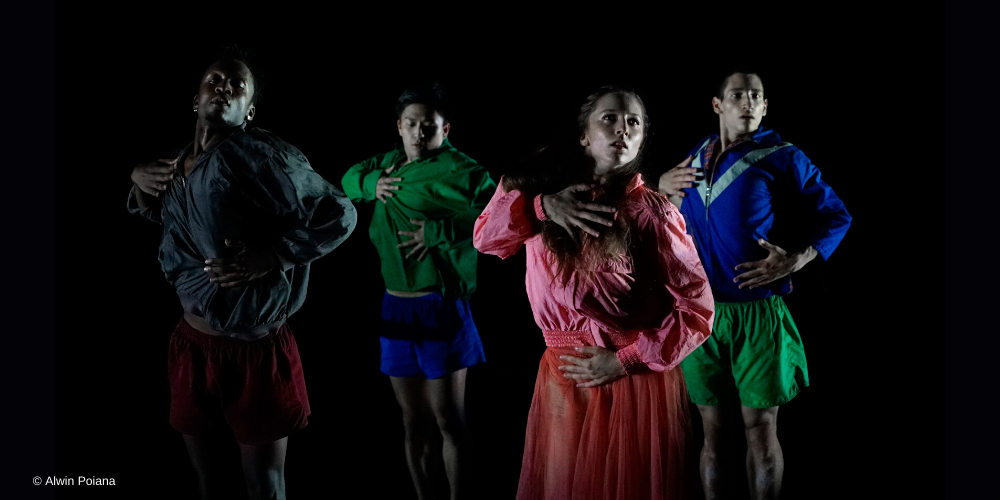

September 10, 2018
In March 2017, I moved from the Netherlands to Marseille to work with Emio Greco and Pieter C. Scholten at the Ballet National de Marseille. When I studied Theatre Studies in Amsterdam I already got in touch with their work and I can remember that their extremely corporeal approach fascinated me. The internship at the Ballet National de Marseille was an opportunity for me to work with Greco and Scholten, to learn how to do dramaturgy in practice and to do research on the use of breath in dance.
At the complete beginning of my research I read the book "The forgetting of air in Martin Heidegger" by Luce Irigaray:
Is not air the whole of our habitation as mortals? Is there a dwelling more vast, more spacious, or even more generally peaceful than that of air? Can man live elsewhere than in air? Neither in earth, nor in fire, nor in water is any habitation possible for him.[1]
It was a relief to find a philosopher who writes to the point. Irigaray’s language inspired me to dive into the research on breath and air. How can it be that we seem to have completely forgotten about this element? In her aerial intervention Irigaray attributes the name “philosophy of forgetting” to this tendency, instead she proposes herself a different form of philosophy which she calls “philosophy of breathing”.[2] In this way, Irigaray distracts the attention from “logos” (speech) and concentrates instead on the body.
When studying the theory of Irigaray from the point of view of dance, the dancers would form a good example of the philosophy of breathing. As the use of breath without speech is considered by Irigaray as something positive and powerful, the way of sharing air between dancers and audience and the communication through breath by (often) non-speaking dancers, could be seen as an advantage.[3]
It surprised me how very little attention is being paid to the element of air in the domain of dance, since breathing forms an important element of many different dance companies. One of those companies is the Ballet National de Marseille, headed by Greco and Scholten. With their philosophy “between brain and movement” and their Double Skin/Double Mind method, Greco and Scholten present their unique view on the role of breath in dance.
The Double Skin/Double Mind method, created in 1998, draws the attention to the body and more specifically to breath. Breathing is the first of four elements of the DS/DM method, and is followed by: Jumping, Expanding and Reducing. During Breathing, the dancers focus on their inhalation and exhalation. While inhaling the dancer strives for an extreme extending of the body, when exhaling the dancer relaxes and moves downwards, hereby looking for the most comfortable way in which that is possible. When all air has left his lungs, the dancer falls down or starts inhaling again looking for new possibilities to extend the body.
I wondered why the DS/DM workshop starts with the element Breathing and found the answer in a quote by Greco in the DS/DM documentary:
Breathing is connecting the inside and the outside, breaking the boundaries of the inside, breaking out. Then the way back, going back, going into yourself, absorbing the outside world into yourself. [4]
Through this focus on breath the dancers learn to connect the inside to the outside. This connection is strongly related to the discord between body and mind in which breath connects the mind to body, the brain to the movement.
Breathing also forms a connection between the body and the space (and the bodies in the space). This is especially of importance in the choreographies of Greco and Scholten in which the dancers use their breath to move in unison. A common technique to tune movements is the counting of music. In the companies of EG|PC however, the dancers do not count. By consciously breathing together they attempt to create an energy between each other. The rhythm of the breath becomes the counting and the connection through air enables the dancers to dance as if they are one body.
Now, a couple of months after finishing my research, I’m thrilled to see how the “philosophy of breathing” will be further developed in the domain of dance studies. Additionally, I would like to stress that, whether my research concentrated on the work of Emio Greco and Pieter C. Scholten, the topic of breath in dance can also be a potential way of studying other approaches of choreographers and can generate new insights in the embodied experience of the dancers and in the artistic projects of a dance company.
You can read the whole research "Don't Forget to Breathe!" here.
This article was originally published at the blog of ICK Amsterdam. Click here to take a look!
[1] Irigaray, Luce. The forgetting of air. London: Athlone, 1999: 8.
[2] Grammatikopoulou, Christina. “Remembering the air: Luce Irigaray’s ontology of breath.” Interactive – 20-05- 2017
[3] Karreman, L. The Motion Capture Imaginary. Ghent: Ghent University, 2017: p.226
[4] Quote by Emio Greco in Double Skin/Double Mind. Documentary. Directed by Maite Bermúdez. Amsterdam: EG|PC, 2006
BODY IN REVOLT
Non Solo Medea interview: Emio Greco | Pieter C. Scholten

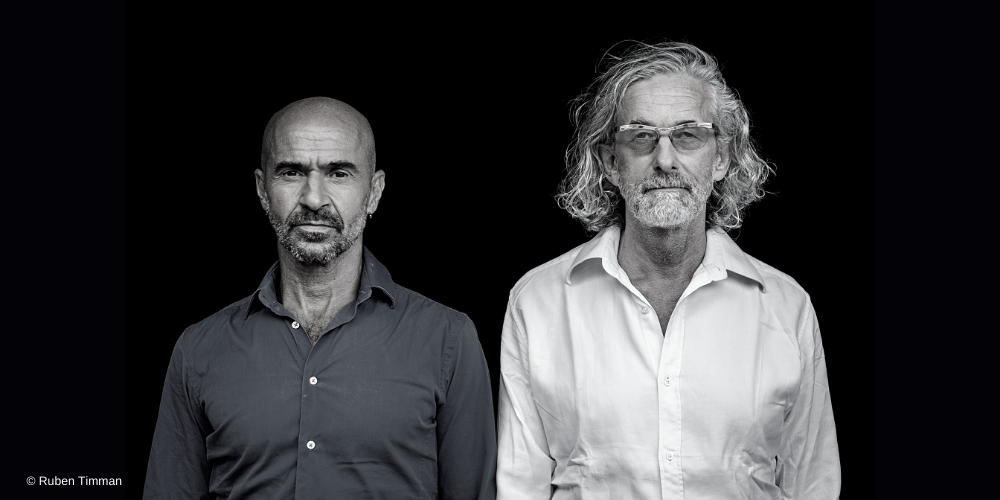
July 12, 2018
After months of preparation for the new production Non Solo Medea, Emio Greco and Pieter C. Scholten exchange the studios at Ballet National de Marseille for the Teatro Grande in Pompeii. Tonight is the premiere of their modern-day tragedy in which 18 dancers, 1 percussionist and 1 actress revisit Euripides and Sophocles to the music of Pink Floyd, Beethoven, Arvo Pärt and Xenakis. What were the original intentions of Greco and Scholten? Why Greek tragedies and Pink Floyd? And what are the difficulties of performing in an ancient theatre?
What were the first steps in this creation?
EG: The genesis of this piece was in April 2017 when we presented Rocco and Boléro in Teatro Stabile in Napels. The director of the festival Theatrum Mundi, Luca De Fusco, proposed that we create a dance performance based on a classical theatre text. We were very much intrigued by this proposal and many conversations with De Fusco followed. How to choose a theatre text for a dance company? This led to the idea of Non Solo Medea (Not Just Medea) in which there is room to play with different characters in Greek tragedy.
PC: We wanted to compose our own travel story through Greek tragedies, following different heroes and heroines. We start with Medea and then continue our voyage with Iphigenia, Antigone and Oedipus. Each of the characters represents a different intention to which we can relate in our dance.
Why Pink Floyd?
PC: You cannot omit Pink Floyd when speaking about the ancient theatre of Pompeii. In 1972 Pink Floyd created the film “Live in Pompeii” in which the rock group played in a completely empty theatre. Two years ago they performed here again with an audience, so it was truly “live”. In Pompeii past, present and future come together.
How, Emio, did you approach the development of the choreography of this creation?
EG: I felt strongly inspired by the space of Pompeii, the ruins, the ashes. My dance emerged from dust. I started to explore the floor with my feet: how does it feel? How does it sound? My research was also linked to a primordial approach of the body, I tried to find the essence of humankind and to follow his evolution: a migration through time but also through space.
It is a couple of days before the premiere in Pompeii now. What are your concerns and what are the challenges related to the space of an ancient theatre such as the one in Pompeii?
EG: The period between rehearsals in the studio and the premiere is always a delicate one. The difficulty is to go further without tiring the piece. Then there is the added challenge of bringing the performance from the closed studio to the open space of Pompeii.
PC: Yes, we created the performance in the studio, located in the basement of the Ballet National de Marseille. But now it’s time to go out, to get in touch with the air. The last couple of weeks have been quite intense, we worked on the smallest of details. Now, after seeing the last run, we realize that we are there. The open-air theatre in Pompeii will provide us the space we need; the piece will come alive there.
What, to you, are the keywords of this production?
PC: The keyword is: destiny, more precisely, our relationship with destiny. This has always been an important subject, from Ancient Greek times to Christian times, to modern times. In Non Solo Medea the question is raised of how to deal with destiny in the future. This is especially reflected in the last part of the performance, in which the “New Man” is researched and in which we call for a new kind of revolt, a revolt for the acceptation of destiny, for the acceptation that sometimes there is no hope. We felt inspired by a quote of the Dutch writer Arnon Grunberg: “Vitally embracing hopelessness, that is the essence of humankind.” During the rehearsals for Non Solo Medea this phrase became an important motivation for us and for the dancers.
Non Solo Medea was performed July 12, 13 an 14 in the Teatro Grande in Pompeii (IT) and July 27 in the Théâtre Antique de Vaison-la-Romaine (FR).
This article was part of a series of interviews on the performance "Non Solo Medea" (2018) which I made for the Ballet National de Marseille. Those series were published in the BNM Magazine "Body in Revolt" in 2018. Learn more about my work as a dramaturge for the choreography Non Solo Medea.
Body in Revolt
Non Solo Medea interview: Manuela Mandracchia - actress
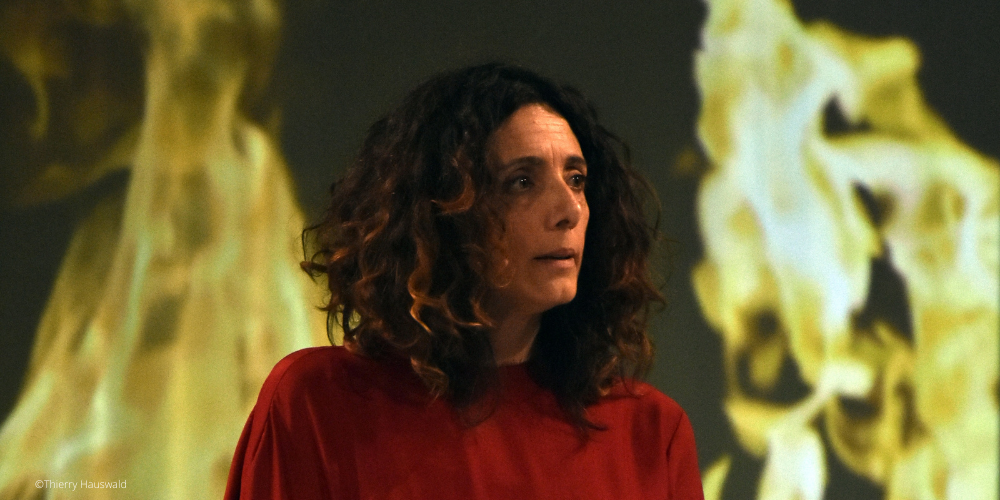
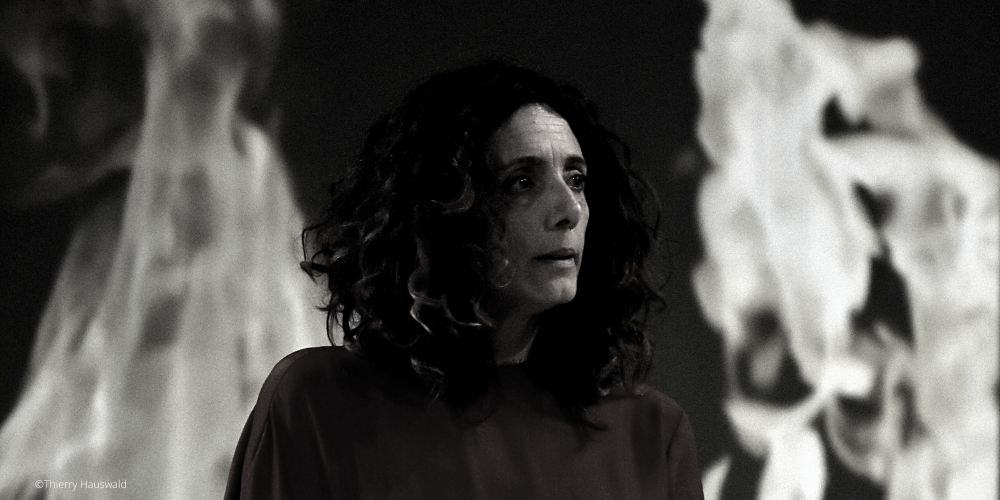
July 12, 2018
Between the moving bodies of 18 dancers and the intense drumming sound of percussionist Flora, one actress gives voice to different characters from Greek tragedies. In this new performance, Non Solo Medea, Manuela Mandracchia, actress, Italian, works with a mixture of ancient and modern texts. What is it like for her to work with Emio Greco, Pieter C. Scholten, the dancers and Flora?
Did you already have experience in working with a dance company?
Not really, I worked in theatre productions before in which one or a few dancers were incorporated, but never with a dance company. It is a whole new experience.
How do you experience working with Emio, Pieter, the dancers and the percussionist?
Emio and Pieter are in a constant research for purity. The language but also the movements of the dancers need to be honest, plain one could even say. The characters I represent, Medea, Antigone, Iphigenia and Oedipus, are famous and strong. Their stories are very emotional and they all experience horrible events. As an actress I feel like diving into these characters, I want to embody them, to feel their emotions. But Emio and Pieter asked me to take a step back. It is as if you’re looking from a distance at what is happening on stage, as if you’re a painter: you made a painting filled with emotions, then you step back, you look at your painting and observe it. Things become clearer. It is a way of working that was new for me, it was difficult but the result is beautiful. We offer the audience a view of the minds of the characters, we hear their thoughts and see their struggles.
What is your favorite text in Non Solo Medea?
It is impossible to choose between Medea, Antigone, Iphigenia and Oedipus! However, I think that in certain stages of your life you can feel a stronger connection with a certain character. At this moment, I feel related to both Medea and Antigone. The first monologue of Medea. Is very strong, she looks at the audience and asks: “Do I have to talk about myself? Me, who is that? Who am I?”. This question “who am I?”, which returns several times during the piece, is an interesting one, just because it is so hard to answer it.
What, to you, are the keywords of this new performance?
There are several words that come to mind: io (Italian for me), understanding, decision, love and fate. But as this performance highlights the research for identity, I would say “io” is very important: “who am I?”. By constantly repeating “io” the meaning of the word changes, it becomes something different, a rhythm, a sound or an echo.
After graduating in 1993 at the Accademia Nazionale d’Arte Drammatica in Rome, Manuela worked with several theatre directors as Luca Ronconi, Antonio Calenda and Massimo de Francovich. She won the UBU award for her role in Amor Nello Specchio (Ronconi) and the Maschere award for her role in Hedda Gabler (Calenda). Apart from doing theatre, she also figured as an actress in several Italian films. ranging from film directors like Nanni Moretti, Luigi Comencini and Marco Bellochio. Currently, Manuela works as a narrator of novels for Radio 3 (IT) and is part of the company Mitipretese à Rome.
This article was part of a series of interviews on the performance "Non Solo Medea" (2018) which I made for the Ballet National de Marseille. Those series were published in the BNM Magazine "Body in Revolt" in 2018. Learn more about my work as a dramaturge for the choreography Non Solo Medea.
About Labanotation
An interview with Vincent Lenfant
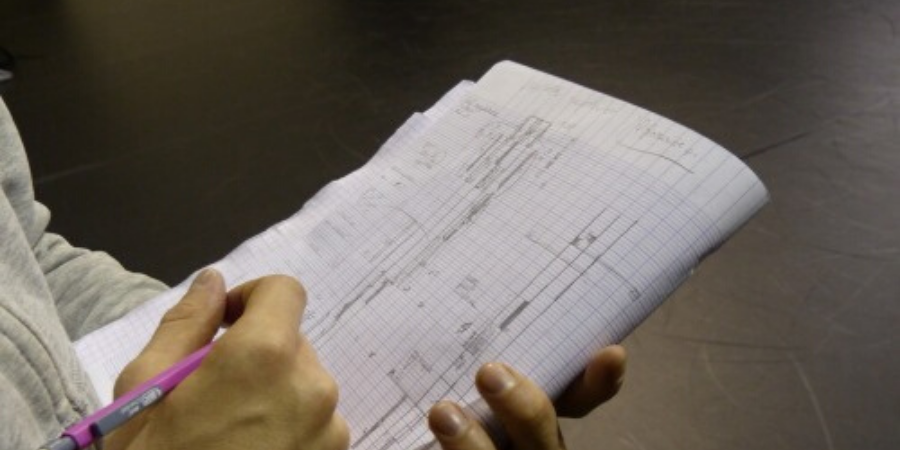
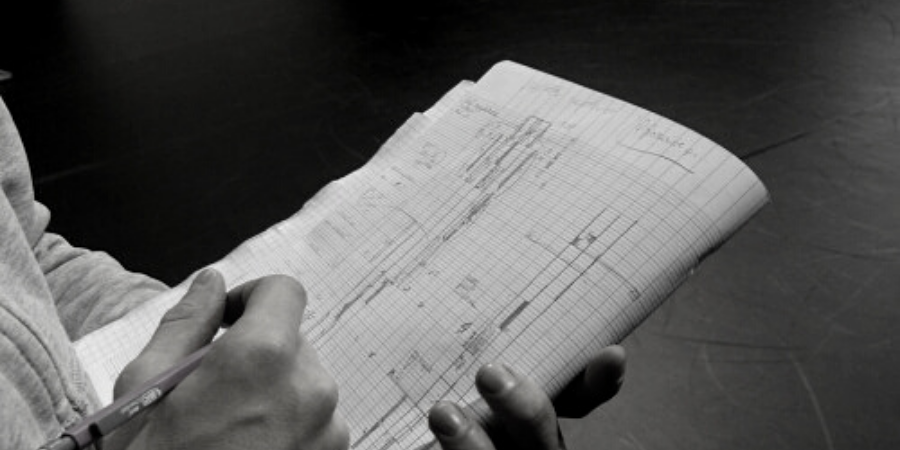
December 21, 2017
While being in the middle of the BNMFEST, Vincent Lenfant, visited the Ballet National de Marseille and attended the rehearsals of Rocca (the female response on the EG|PC performance Rocco). Labanotation is a notation system for human movement, developed by dancer, choreographer and researcher Rudolf Laban in 1928. This notation style, often used in dance, resembles musical notation as it is composed of lines, but is different in the sense that the scores are being read from bottom to top. The lines and symbols used in Labanotation are connected to the different parts of the body, the size of the symbol indicates the duration of the movement. That is why Labanotation differs from other movement notation systems that work with anatomical figures, music notes or describe the performance in words.
Nowadays, notation systems are becoming a rare phenomenon as we live in an era where we are surrounded by devices (as cameras or smartphones) that are able to register every movement at every moment. What does Labanotion have to offer the dance world nowadays?
Vincent: Labanotation is a very clean way of notating dance. A video can have bugs which troubles the image of the movement. This way of notating illustrates every aspect of every single movement and so the registration is much more detailed. Besides, I can integrate remarks of the dancers and choreographers in my scores, which generates a deeper understanding of the choreography.
I assume that you need to have a certain knowledge of movement in order to be able to register a whole choreography in Labanotation. Do you think that it is required being a dancer in order to create a representable written score?
Vincent: No, it’s not necessary to be a dancer but you do need a strong awareness of the body and at least some basic knowledge of dance.
How long does it take to fully notate a choreography as Rocca?
Vincent: That takes at least as much time as the dancers need to rehearse for the performance haha!
Is there a particular difficulty in notating dance?
Vincent: A difficult aspect is the tendency between the subjectivity of the work and the almost mathematical notation system. This means, that I’m always offering my point of view on the choreography. But this is the same for other notation systems. Still I try to be as objective as possible, it is up to the dancer who will use my scores, to discover his/her own interpretation of the movement.
This article was originally published at the blog of ICK Amsterdam. Click here to take a look!
